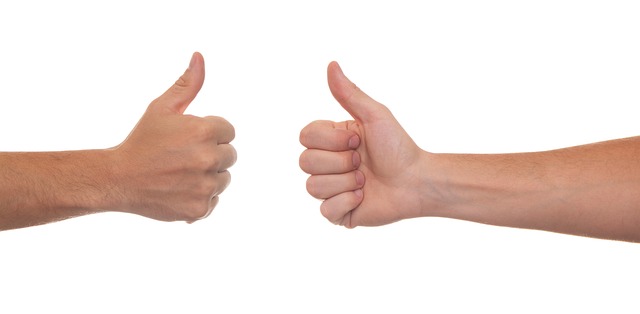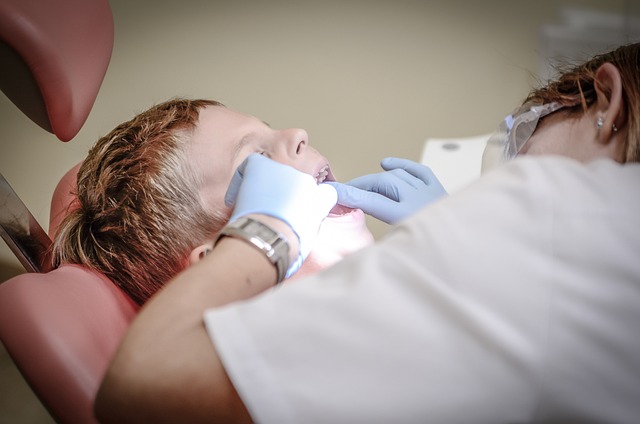Orthodontic Essentials: How Much Is a Retainer from Orthodontist?
Are you curious about the cost of a retainer from an orthodontist? Look no further, as we delve into the orthodontic essentials and shed light on the price of this crucial dental appliance. Whether you’re considering getting braces or have recently had them removed, understanding the importance of retainers and their associated costs is vital. In this article, we’ll provide you with a confident, knowledgeable, and neutral perspective on how much you can expect to pay for a retainer from an orthodontist. So, let’s explore this topic together and ensure you’re well-informed about the financial aspect of maintaining a beautiful smile.
1. Understanding the Importance of Retainers in Orthodontics
In orthodontics, retainers play a crucial role in maintaining the results achieved from braces or other orthodontic treatments. Once the braces come off, the teeth may have a tendency to shift back to their original positions. This is where retainers step in, providing the necessary support to keep the teeth in their new and improved alignment.
So, why are retainers so important? Here are a few key reasons:
- Stability: Retainers help stabilize the teeth in their corrected positions, preventing them from shifting back.
- Long-term success: Wearing retainers as instructed by your orthodontist ensures the long-term success of your orthodontic treatment.
- Preservation of bite: Retainers also help maintain a proper bite, ensuring that the upper and lower teeth fit together correctly.
- Prevention of relapse: Without the use of retainers, there is a higher risk of orthodontic relapse, where the teeth gradually move back to their original positions.
By , you can ensure that your beautiful smile remains intact for years to come. Remember to follow your orthodontist’s instructions regarding retainer wear and care to maximize the benefits they provide.

2. Factors Affecting the Cost of Orthodontic Retainers
Orthodontic retainers are an essential part of maintaining the results achieved from orthodontic treatment. The cost of these retainers can vary depending on several factors. Understanding these factors can help patients make informed decisions about their orthodontic care. Here are some key factors that can affect the cost of orthodontic retainers:
- Type of Retainer: There are different types of orthodontic retainers available, such as removable retainers, fixed retainers, and clear aligner retainers. Each type comes with its own advantages and costs. Removable retainers tend to be more affordable compared to clear aligner retainers, which are often more expensive due to their advanced technology and customization.
- Material Used: The material used to construct the retainer can also impact its cost. Retainers made from high-quality materials, such as stainless steel or clear plastic, tend to be more expensive. However, these materials offer durability and comfort, which can be worth the investment in the long run. On the other hand, retainers made from less expensive materials may be more affordable but may not provide the same level of quality.
- Geographical Location: The cost of orthodontic retainers can also vary depending on the location of the orthodontic practice. In areas with a higher cost of living or where orthodontic services are in high demand, the cost of retainers may be higher. It is important for patients to research and compare prices from different orthodontic practices in their area to ensure they are getting the best value for their money.
Considering these factors can help patients understand why the cost of orthodontic retainers may vary. It is important to consult with an orthodontist to determine the most suitable type of retainer for individual needs and budget. By investing in high-quality retainers and proper care, patients can ensure the longevity of their orthodontic treatment results.

3. Exploring the Range of Options: How much does a Retainer from an Orthodontist Usually Cost?
When it comes to orthodontic treatment, one of the options that patients often consider is getting a retainer. Retainers are custom-made devices that help maintain the alignment of teeth after braces or other orthodontic treatments. The cost of a retainer can vary depending on several factors, including the type of retainer, the orthodontist’s location, and the complexity of the individual case.
Factors affecting the cost of a retainer:
- Type of retainer: There are different types of retainers available, including removable retainers, fixed retainers, and clear aligner retainers. Each type has its own advantages and price range. Removable retainers tend to be more affordable, while clear aligner retainers, such as Invisalign, may have a higher cost due to their advanced technology.
- Orthodontist’s location: The cost of orthodontic treatment can vary depending on the area where the orthodontist is located. In general, orthodontic treatment tends to be more expensive in urban areas compared to rural areas. This is because the cost of living and operating a practice is typically higher in urban areas.
- Complexity of the case: The complexity of the individual case can also impact the cost of a retainer. Some patients may require a more extensive treatment plan, which can involve additional appointments and adjustments. This can result in a higher overall cost for the retainer.
It’s important to note that the cost of a retainer may not be covered by insurance. However, many orthodontists offer payment plans or financing options to make treatment more affordable. To get an accurate estimate of the cost of a retainer, it’s best to schedule a consultation with an orthodontist who can assess your specific needs and provide you with a personalized treatment plan.

4. Additional Fees to Consider When Getting a Retainer from an Orthodontist
When considering getting a retainer from an orthodontist, it is important to be aware of the additional fees that may come along with the treatment. These fees can vary depending on several factors, so it is crucial to discuss them with your orthodontist beforehand. Here are some additional fees you should consider:
- Replacement Fees: Retainers are small and can be easily misplaced or lost. In such cases, you may need to pay a replacement fee to get a new retainer made.
- Adjustment Fees: Over time, your teeth may shift slightly, requiring adjustments to your retainer. These adjustments may incur additional fees, so it is important to factor them into your budget.
- Repair Fees: Accidents happen, and retainers can get damaged or broken. If this occurs, you may need to pay a repair fee to have it fixed.
Additionally, it is worth noting that some orthodontists may charge consultation fees or fees for follow-up appointments. These fees may not be included in the overall cost of the retainer, so it is advisable to inquire about them in advance to avoid any surprises.

5. Is it Worth Investing in a Retainer from an Orthodontist?
Investing in a retainer from an orthodontist can be a wise decision for maintaining the results of your orthodontic treatment. Here are some key factors to consider when deciding if a retainer is worth the investment:
- Preserving the alignment: A retainer helps to keep your teeth in their newly aligned position, preventing them from shifting back to their original position. This is especially important in the first few months after completing orthodontic treatment, as the teeth are still prone to movement. By wearing a retainer as recommended by your orthodontist, you can ensure that your investment in the initial treatment pays off in the long run.
- Preventing future dental issues: Retainers also play a crucial role in preventing potential dental problems. They help to maintain the correct bite alignment, which can minimize the risk of issues such as teeth grinding, jaw pain, and excessive wear on tooth surfaces. By investing in a retainer, you can potentially save yourself from costly dental procedures or additional orthodontic treatment in the future.
Ultimately, the decision to invest in a retainer from an orthodontist is a personal one. However, considering the benefits of retaining your orthodontic results and preventing future dental issues, it is often a worthwhile investment. Consult with your orthodontist to determine the best type of retainer and the recommended duration of wear based on your specific orthodontic needs. Remember, proper maintenance and regular check-ups with your orthodontist are crucial to ensure the long-term success of your orthodontic treatment.
6. Tips for Managing the Cost of Orthodontic Retainers
Orthodontic retainers are an essential part of maintaining a straight and healthy smile after orthodontic treatment. While they are crucial for long-term results, the cost of orthodontic retainers can add up over time. Here are some helpful :
1. Take good care of your retainers: Proper care and maintenance of your retainers can extend their lifespan and save you money in the long run. Clean your retainers regularly using a gentle toothbrush and non-abrasive toothpaste or retainer cleaner. Avoid exposing them to hot water, as it can warp the plastic. Additionally, store them in a protective case when not in use to prevent damage or loss.
2. Consider insurance coverage: Check with your dental insurance provider to see if orthodontic retainers are covered under your plan. Some insurance plans may cover a portion of the cost, reducing your out-of-pocket expenses. If your insurance does not cover retainers, ask your orthodontist if they offer any payment plans or financing options to help make the cost more manageable.
7. Ensuring Long-Term Success: The Role of Retainers in Orthodontic Treatment
Retainers play a crucial role in ensuring long-term success in orthodontic treatment. Once the braces are removed, it is essential to maintain the newly aligned teeth in their corrected positions. This is where retainers come into play. Retainers are custom-made appliances made from either clear plastic or wires that are worn after braces to hold teeth in place and prevent them from shifting back to their original positions.
Retainers are typically worn full-time for the first few months after braces removal, and then gradually transitioned to a nighttime-only schedule. This allows the teeth and surrounding tissues to adapt to their new positions. It’s important to follow the orthodontist’s instructions regarding retainer wear and care to ensure optimal results. Regular retainer check-ups are also necessary to monitor the progress and make any necessary adjustments to maintain the desired alignment. Proper retainer wear and maintenance will help preserve the smile achieved through orthodontic treatment for years to come.
Frequently Asked Questions
Q: How much can I expect to pay for a retainer from an orthodontist?
A: The cost of a retainer from an orthodontist can vary depending on several factors, such as the type of retainer required and the specific orthodontic practice. Generally, you can expect to pay anywhere from $100 to $500 for a retainer.
Q: What are the different types of retainers available?
A: There are three main types of retainers commonly used by orthodontists: Hawley retainers, Essix retainers, and permanent retainers. Hawley retainers are made of acrylic and wire and are removable. Essix retainers are clear, plastic aligner-like retainers that are also removable. Permanent retainers, as the name suggests, are attached to the back of the teeth and are not removable.
Q: Are there any additional costs involved with getting a retainer?
A: In addition to the cost of the retainer itself, there may be additional fees associated with getting a retainer. These fees can include the cost of dental impressions, adjustments or repairs to the retainer, and follow-up appointments. It is important to discuss these potential costs with your orthodontist beforehand.
Q: Does insurance cover the cost of a retainer?
A: Whether or not insurance covers the cost of a retainer depends on your specific insurance plan. Some dental insurance plans may cover a portion of the cost, while others may not cover it at all. It is recommended to contact your insurance provider to determine the extent of coverage for orthodontic retainers.
Q: Can I purchase a retainer without visiting an orthodontist?
A: While there are some over-the-counter options available, it is highly recommended to consult with an orthodontist before purchasing a retainer. Orthodontists are trained professionals who can assess your specific orthodontic needs and ensure that the retainer fits properly. They can also provide guidance on proper usage and care for the retainer.
Q: How long do retainers typically last?
A: The lifespan of a retainer can vary depending on various factors, including the type of retainer and how well it is taken care of. On average, removable retainers like Hawley retainers and Essix retainers can last anywhere from one to five years. Permanent retainers, if properly maintained, can last significantly longer.
Q: Can I replace a lost or damaged retainer?
A: Yes, if you lose or damage your retainer, it is important to contact your orthodontist as soon as possible. They can assess the situation and provide you with a replacement retainer. Keep in mind that there may be additional costs associated with replacing a lost or damaged retainer.
Q: How often should I wear my retainer?
A: The frequency of retainer wear will depend on your orthodontist’s instructions. In most cases, orthodontists recommend wearing a retainer full-time for the first few months after braces are removed, followed by a transitional period where the retainer is worn only at night. Ultimately, your orthodontist will provide specific guidelines based on your individual needs.
Q: What happens if I stop wearing my retainer?
A: If you stop wearing your retainer as instructed by your orthodontist, there is a chance that your teeth may gradually shift back to their original positions. This can result in the need for additional orthodontic treatment to correct the misalignment. It is essential to follow your orthodontist’s guidelines to maintain the results achieved through orthodontic treatment.
Final Thoughts
In conclusion, understanding the cost of a retainer from an orthodontist is essential for anyone undergoing orthodontic treatment. By considering the factors that influence the price, such as the type of retainer, location, and insurance coverage, individuals can make informed decisions regarding their oral health. While the cost may vary, it is crucial to prioritize the quality and effectiveness of the retainer over its price tag. Remember, a well-fitted retainer plays a vital role in maintaining the results achieved through orthodontic treatment. So, consult your orthodontist, explore your options, and invest wisely in your smile.






